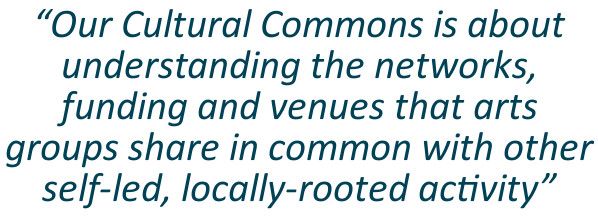Concluding our Spring 2015 series on Bridging Culture and Regeneration, Jemma Neville shares her thoughts, prompted by a global summit in Spain, on culture’s position in debates about sustainable development and community participation at the international and local levels. She also highlights the recently launched ‘Our Cultural Commons’ initiative, which encourages the enhancement of creative lives in communities across the UK.
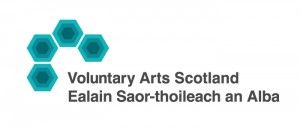 The solar eclipse on a cold, grey morning in Bilbao was not immediately obvious. Huddled together with other delegates from the United Cities Local Government (UCLG) Culture Summit, I peered at the live satellite link up to clearer skies in northern Europe while a corduroy-clad professor from the University of Bilbao explained that we would have to wait a very long, long time until the next total eclipse. I lifted the cardboard eclipse glasses to my sad eyes in awkward compliance for a group photo.
The solar eclipse on a cold, grey morning in Bilbao was not immediately obvious. Huddled together with other delegates from the United Cities Local Government (UCLG) Culture Summit, I peered at the live satellite link up to clearer skies in northern Europe while a corduroy-clad professor from the University of Bilbao explained that we would have to wait a very long, long time until the next total eclipse. I lifted the cardboard eclipse glasses to my sad eyes in awkward compliance for a group photo.
There was absolutely no danger of being blinded by the sun that morning. And yet, while we might not have been able to see it, the powerful energy of the sun, moon, and other things we don’t fully understand, was all around us. There was a heightened sense of awareness and connectivity with one another.
From Country to City

Introduction to Ceramics at Leith Academy
The Culture Summit in the Basque region of Spain gathered together mayors, academics, lawyers, and artists from across the world to consider the intrinsic and instrumental role of culture in sustainable development, particularly with regard to cultural planning and investment in cities.
The premise was that while the last century was about state-to-state international relations, we are living through a transition in the twenty-first century towards city-to-city leadership linked in a global network (If Mayors Rule the World).
Cities might be able to promote and protect the right to cultural life where nation states have failed to do so because of realpolitik and a reluctance of many to adequately legislate for economic, social and cultural rights in general.
I was invited to give a presentation on culture and social inclusion with reference to my work at Voluntary Arts Scotland and how this is made real at a local level in Leith, Edinburgh.
The Right to Cultural Life
Eleanor Roosevelt famously said:
“Where, after all, do universal human rights begin? In small places, close to home – so close and so small that they cannot be seen on any maps of the world. Yet they are the world of the individual person; the neighborhood he lives in; the school or college he attends; the factory, farm, or office where he works. Such are the places where every man, woman, and child seeks equal justice, equal opportunity, equal dignity without discrimination. Unless these rights have meaning there, they have little meaning anywhere. Without concerted citizen action to uphold them close to home, we shall look in vain for progress in the larger world.”
I argue that our right to cultural life (Universal Declaration of Human Rights Article 27, International Covenant on Economic Social and Cultural Rights Article 15) also begins in the small places close to home. These small places include community centres, libraries, theatres, cafes, and kitchen tables.
The world of the creative individual is made more meaningful by engagement in the voluntary, or amateur, arts. The Our Cultural Commons conversation, led by Voluntary Arts and Arts Development UK, is part of concerted citizen action to bring home the right to cultural life.
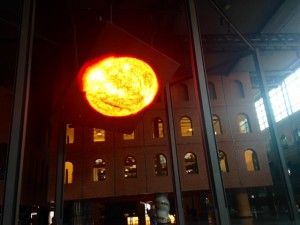
An installation at the Alhondiga Culture and Leisure Centre, Bilbao
Like many, I enjoy travelling with my job and have a social network of friends and peers across the world. I am proud to live and work in a capital city with a global reputation for arts festivals and a year-round programme of award-winning performing arts and free access to permanent collections in national museums and galleries.
And yet, my own direct and active participation as a creative individual is very local. I am learning to paint at evening classes, I discuss fiction with a group of friends in a favourite local pub, I have just completed a weekend ceramics course at the local secondary school, and I write poems from my kitchen table. My voluntary arts world is where I focus on the here and now, grow confident in self-expression, and connect with a diverse community of neighbours from different ages, ethnic backgrounds and life experiences.
Culture is not ‘Nice’, but Essential
At an international level, there is growing momentum to regard culture as the fourth pillar of sustainable development, alongside economic, social, and environmental development. There has been excellent work from the UN Special Rapporteur in the field of cultural rights, Farida Shaheed, in linking the previously separate discourses of human rights and cultural planning.
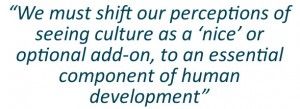 Culture is no longer just regarded as an enabler to other rights, such as education, but of value to human development in and of itself. Shaheed spoke at the UCLG Culture Summit about the need for cultural heritage to be a living construct – free from the cultural oppression of minority rule (particularly true where gender inequality prevails) – and of the need for state and city planners to provide for equal and inclusive access to the enjoyment of culture.
Culture is no longer just regarded as an enabler to other rights, such as education, but of value to human development in and of itself. Shaheed spoke at the UCLG Culture Summit about the need for cultural heritage to be a living construct – free from the cultural oppression of minority rule (particularly true where gender inequality prevails) – and of the need for state and city planners to provide for equal and inclusive access to the enjoyment of culture.
At a practical level, this means removing barriers – physical and other – and having full disabled access, adequate street-lighting for night-time safety, and basic hygiene facilities. This might all seem a bit mundane, but until we shift our perceptions of seeing culture as a ‘nice’ or optional add-on, to an essential component of human development, engagement with the arts and its funding will remain the preserve of the few not the many.
Mientras
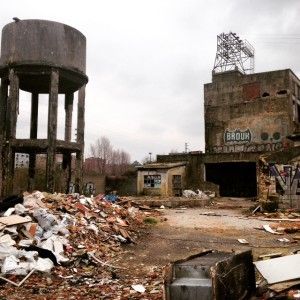
The Mientras collective reclaim vacant spaces like this one in Zorrozaurre, Bilbao
As the right to cultural life becomes embedded in the post-2015 Development Goals, it is appropriate that we borrow the maxim from international development of ‘think global, act local’. And so, acting local, I wanted to understand the impact of the Guggenheim Museum on Bilbao’s broader cultural ecology.
I visited Zorrozaurre in the Deusto district of Bilbao. This man-made peninsula is industrial wasteland between the river and canal and is about a mile from Frank Gehry’s iconic building and the quaint bars of Bilbao’s old town. Our small group unpicked a trail through the abandoned ruins of old factories and urban decay. The long-term regeneration plan is to annex the peninsula and create an ‘island for culture’ (“Manhattan is an island”, remarked one local without a hint of irony) but while Spain waits for the hangover of the economic crash to wear off, all regeneration work is stalled.
We met with the organisers of a community arts collective called ‘Mientras’ (meanwhile). Faced with a likely ten year delay before the bulldozers and town-planners return, artists and community activists have reclaimed space for murals, small market stalls, craft workshops and a fully functioning theatre. It’s an altogether gentle, positive act of civil disobedience. But without links to regular public transport, street lighting, or basic utilities, projects like these are cut off from the main infrastructure of the city and disconnected from both the footfall of visitors spending in the gift shop and restaurants of the Guggenheim and, importantly, the small places close to home where people work and live.
At Voluntary Arts, our developmental support is focussed on the people that set up and run voluntary arts groups and provide long-term, strong and sustainable opportunities for people to develop creative talent or share a passion with other creatives on a regular basis. Voluntary arts groups are both for the meanwhile here and now, and the tomorrow.
Acting Local
Back home in the UK, what does the concerted citizen action of the Our Cultural Commons look like?
Well, it is a conversation. It requires both listening and points of view. It is about connectivity across different areas of public policy to understand the networks, funding and venues that arts groups share in common with other self-led, locally-rooted activity such as adult education, sports, community festivals and heritage. And it is about valuing our cultural life – the social, economic, and human value.
In Scotland, the post-Christie Commission political landscape is well-versed in the language of an ‘assets-based approach’ for recognising what is strong and positive within our communities and regenerating where change and further investment is needed. The assets can be empty or under-utilised public and privately owned buildings, networks of community groups, or of course individual people themselves with initiative and local credibility. Scotland’s former Chief Medical Officer, Sir Harry Burns, talks about the importance of local ‘connectivity’ such as that provided by community activities, faith groups and volunteering as an indicator for wellness and ‘acquired resilience’ for good mental health (see also his TED Talk, ‘What Causes Wellness’).
 We are now awaiting the next stage of the Community Empowerment legislation progressing through the Scottish Parliament before we can determine the extent to which communities in urban and rural areas will be able to gain greater access or ownership of physical assets, and how this might be useful for voluntary arts groups. It was therefore very useful to have the perspectives of the Development Trusts Association Scotland around the table at the first Our Cultural Commons discussion in Edinburgh.
We are now awaiting the next stage of the Community Empowerment legislation progressing through the Scottish Parliament before we can determine the extent to which communities in urban and rural areas will be able to gain greater access or ownership of physical assets, and how this might be useful for voluntary arts groups. It was therefore very useful to have the perspectives of the Development Trusts Association Scotland around the table at the first Our Cultural Commons discussion in Edinburgh.
Much like a total solar eclipse on a cloudy day, recognising and valuing our local, cultural life isn’t always blindingly obvious to policy-makers and politicians, but regular creative participation is a powerful energy force for our individual and collective wellbeing. It’s often unseen and under-the-radar in small places. At a time of decreased public spending and contested arts funding distribution, it’s time that we shine a light on ‘our cultural commons’. The right to cultural life should be promoted and protected for future generations to access and enjoy.
This blog originally appeared on the Our Cultural Commons website
